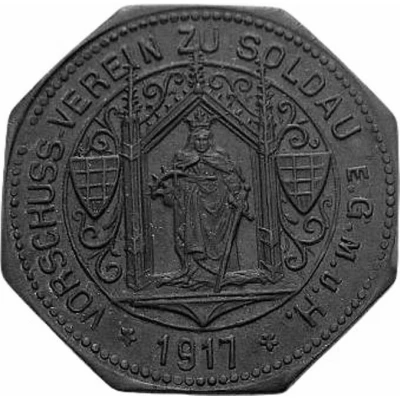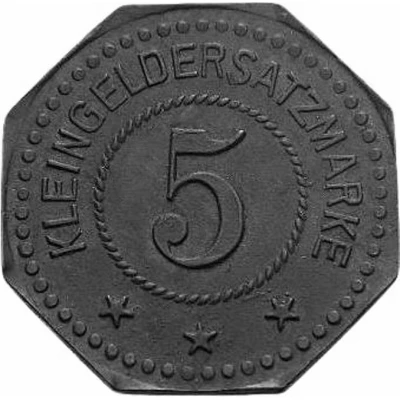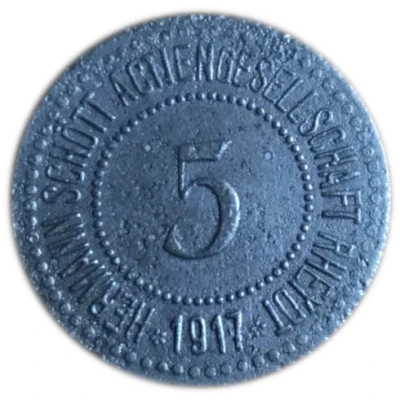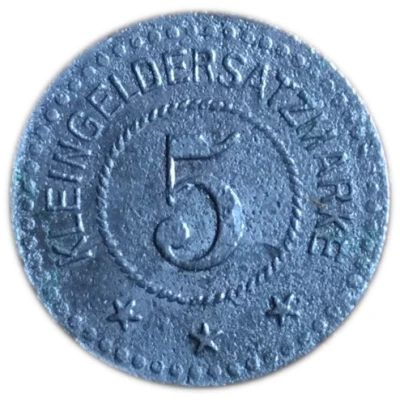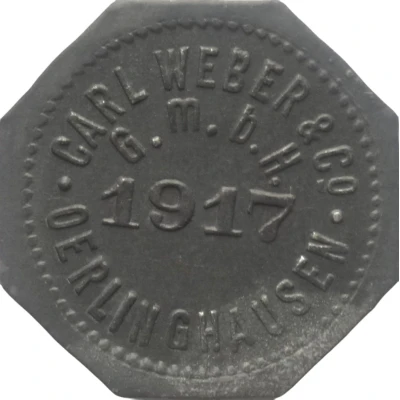
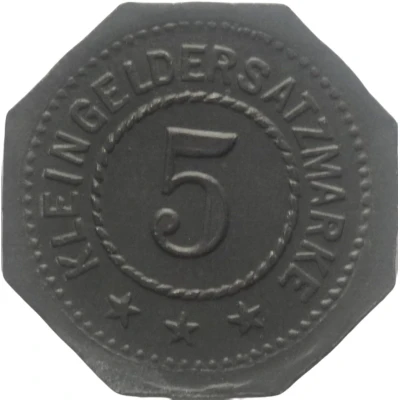

© Willem63 (CC BY-NC-SA)
5 Pfennigs - Oerlinghausen Carl Weber and C° G.m.b.H.
1917 year| Zinc | 1.5 g | 19.0 mm |
| Issuer | German notgeld (Germany) |
|---|---|
| Emperor | William II (Wilhelm II) (1888-1918) |
| Type | Standard circulation coin |
| Year | 1917 |
| Value | 5 Pfennigs (5 Pfennige) (0.05) |
| Currency | Mark (1914-1924) |
| Composition | Zinc |
| Weight | 1.5 g |
| Diameter | 19.0 mm |
| Thickness | 0.8 mm |
| Shape | Octagonal (8-sided) |
| Technique | Milled |
| Orientation | Medal alignment ↑↑ |
| Demonetized | Yes |
| Updated | 2024-10-04 |
| Numista | N#349443 |
|---|---|
| Rarity index | 97% |
Reverse
Pearl rim, legend surrounding rope circle with denomination centered
Script: Latin
Lettering:
KLEINGELDERSATZMARKE
5
★★★
Edge
Plain
Comment
Menzel: BBBFa: Leinenweberei (Linen weaving)
Interesting fact
The 5 Pfennigs - Oerlinghausen coin from 1917 was part of a series of notgeld coins issued during World War I to address a shortage of small denomination coins in Germany. The coin was made of zinc, which was a cheaper alternative to traditional metals like copper or silver, and it weighed only 1.5 grams, making it one of the lightest coins in circulation at the time. Despite its small size and value, the coin remains a popular collector's item today, with some mint conditions selling for hundreds of euros.
